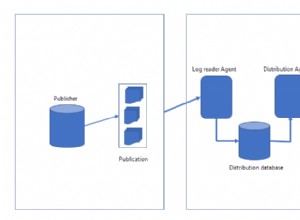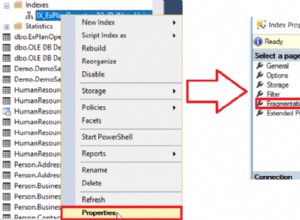Cela affichera tous les index avec des détails (extraits de mes définitions de vue):
SELECT i.relname as indname,
i.relowner as indowner,
idx.indrelid::regclass,
am.amname as indam,
idx.indkey,
ARRAY(
SELECT pg_get_indexdef(idx.indexrelid, k + 1, true)
FROM generate_subscripts(idx.indkey, 1) as k
ORDER BY k
) as indkey_names,
idx.indexprs IS NOT NULL as indexprs,
idx.indpred IS NOT NULL as indpred
FROM pg_index as idx
JOIN pg_class as i
ON i.oid = idx.indexrelid
JOIN pg_am as am
ON i.relam = am.oid;
Ajoutez éventuellement une jointure supplémentaire à la fin afin de réduire les espaces de noms :
SELECT i.relname as indname,
i.relowner as indowner,
idx.indrelid::regclass,
am.amname as indam,
idx.indkey,
ARRAY(
SELECT pg_get_indexdef(idx.indexrelid, k + 1, true)
FROM generate_subscripts(idx.indkey, 1) as k
ORDER BY k
) as indkey_names,
idx.indexprs IS NOT NULL as indexprs,
idx.indpred IS NOT NULL as indpred
FROM pg_index as idx
JOIN pg_class as i
ON i.oid = idx.indexrelid
JOIN pg_am as am
ON i.relam = am.oid
JOIN pg_namespace as ns
ON ns.oid = i.relnamespace
AND ns.nspname = ANY(current_schemas(false));




